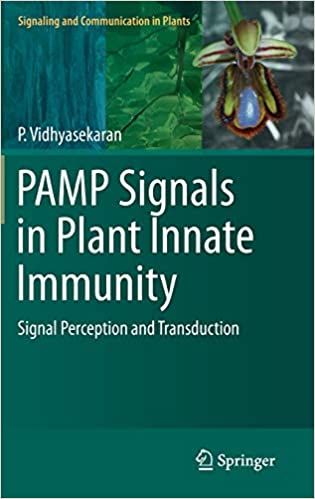
อัปเดตล่าสุดเมื่อ:2021-10-21 00:00:00
PAMP signals in plant innate immunity : signal perceptionand transduction
ผู้แต่ง : P. Vidhyasekaran
สำนักพิมพ์ : Springer
ปีพิมพ์ : 2014
พิมพ์ครั้งที่:
Plant innate immunity is a potential surveillance system of plants and is the first line of defense against invading pathogens. The immune system is a sleeping system in unstressed healthy plants and is activated on perception of the pathogen-associated molecular patterns (PAMP; the pathogens signature) of invading pathogens. The PAMP alarm/danger signals are perceived by plant pattern-recognition receptors (PRRs). The plant immune system uses several second messengers to encode information generated by the PAMPs and deliver the information downstream of PRRs to proteins which decode/interpret signals and initiate defense gene expression. Activation of the sleeping plant innate immune system by using different biotechnological tools would suppress the development of a wide range of plant pathogens in economically important crop plants. Enhancement of disease resistance through altered regulation of plant immunity signaling systems would be a durable and publicly acceptable technology in plant disease management. This book describes the most fascinating PAMP-PRR signaling complex and signal transduction systems. It also discusses the highly complex networks of signaling pathways involved in transmission of the signals to induce distinctly different defense-related genes to mount offence against different biotrophic, hemibiotrophic, and necrotrophic pathogens
ตรวจสอบสถานะทรัพยากรสารสนเทศในระบบ